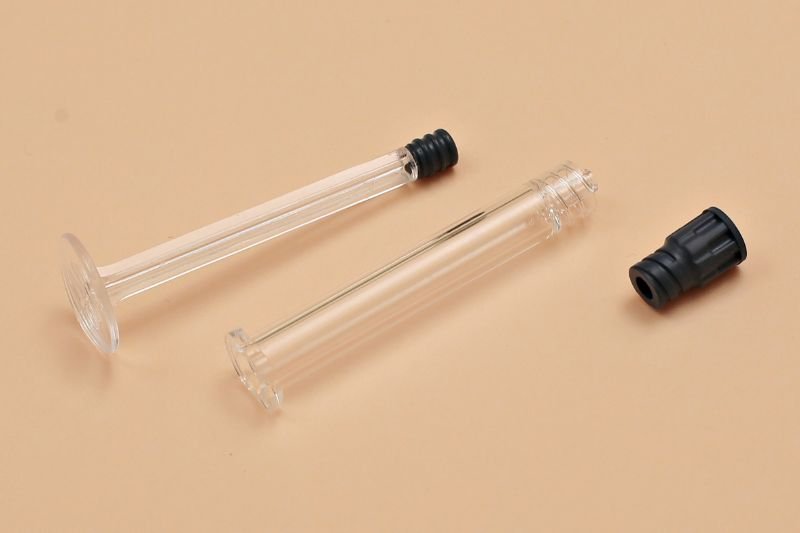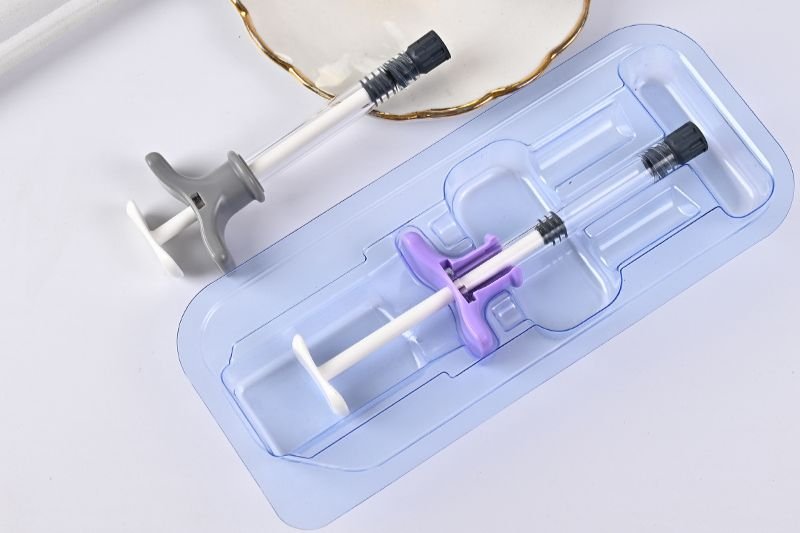Prefilled syringes are increasingly replacing old-fashioned ampoules and vials in our lives. They’re becoming the go-to choice for packaging and injecting medicine. These syringes offer better protection for medications during transport and storage. They’re easier to use and make dosing more comfortable than other types of packaging. However, using them means better drug packaging standards are needed. Besides the well-known glass prefilled syringes, we’ll also introduce a new kind called polymer syringes.
What are prefillable polymer syringes?
Two types of polymer syringes are available. One is the Cyclo Olefin Copolymer (COC) syringe, and the other is the Cyclo Olefin Polymer (COP) syringe. COC and COP are new kinds of high-performance plastic. They are known for their high purity and transparency. While both share these characteristics, they differ in their synthesis processes.
COC is a copolymer of cyclic olefins (cyclopentene or norbornene) and olefins (ethylene or propylene). It is a non-crystalline, transparent copolymer with a cyclic olefin structure.
On the other hand, COP is a polymerization product of cyclic olefins. Dicyclopentadiene undergoes ring-opening metathesis polymerization catalyzed by transition metal catalysts. Then, hydrogenate the product to form amorphous homopolymers.
COC and COP polymer syringes have excellent properties that suit many applications. These range from pharmaceuticals to electronics. Understanding their unique processes and properties is critical. It helps in selecting the best material for each use.

The benefits of polymer syringes.
Polymer syringes offer many vital benefits. This increases their importance and use in prefilled syringes. These advantages include:
- High transparency: It allows easy inspection of the contents to secure the medication’s integrity.
- Low birefringence: They do not cause double images when viewed through polarized light. It ensures an accurate visual assessment of the medication.
- Low Water Absorption: Preventing moisture ingress into the syringe to maintain the stability of the medication.
- High Rigidity: High strength prevents damage to the syringe during handling and transport.
- High Heat Resistance: Steam sterilization processes are available to warrant the sterility of the medication.
- Compliance with FDA Standards: Polymer syringes meet the regulatory safety, quality, and performance requirements.
Polymer syringes have extra benefits in the biopharmaceutical field:
- No Adhesive: It can increase purity and eliminate the risk of adhesive issues without adhesive.
- Low or No Siliconization: Users can choose low or no-silicone-coating syringes, reducing the risk of silicone-related complications.
- No Tungsten Ion Residue: These syringes do not leave behind any tungsten ions. This keeps the medication safe and pure.
- Low Protein Adsorption: They have low protein adsorption, minimizing medication loss and ensuring accurate dosing.
- No Risk of Fragment Shedding: Polymer syringes are formed as one piece. They remove the risk of shedding fragments to keep the medicine and patients safe.
- No pH Changes: No metal ions leaching can keep the medication’s stability and efficacy.
These advantages make polymer syringes a top choice in many applications. They are especially popular in the pharmaceutical industry. In this industry, it is crucial to keep medications pure, stable, and intact. This is vital for patient safety and efficacy. Polymer syringes are good solutions for packaging and giving pharmaceuticals.


